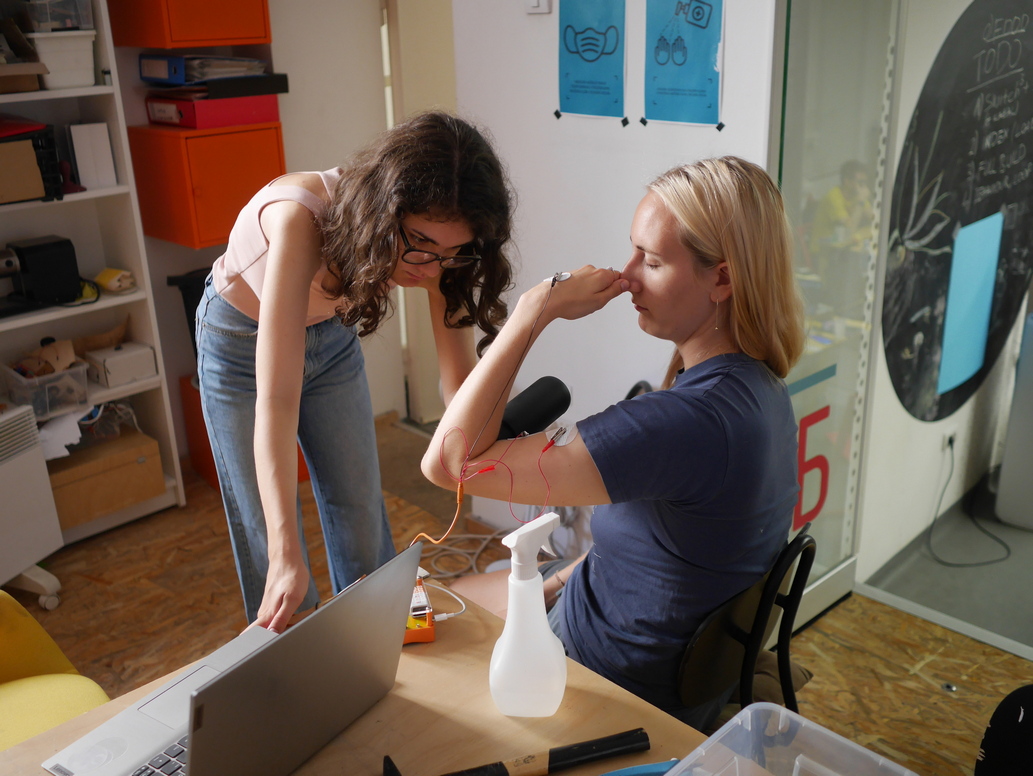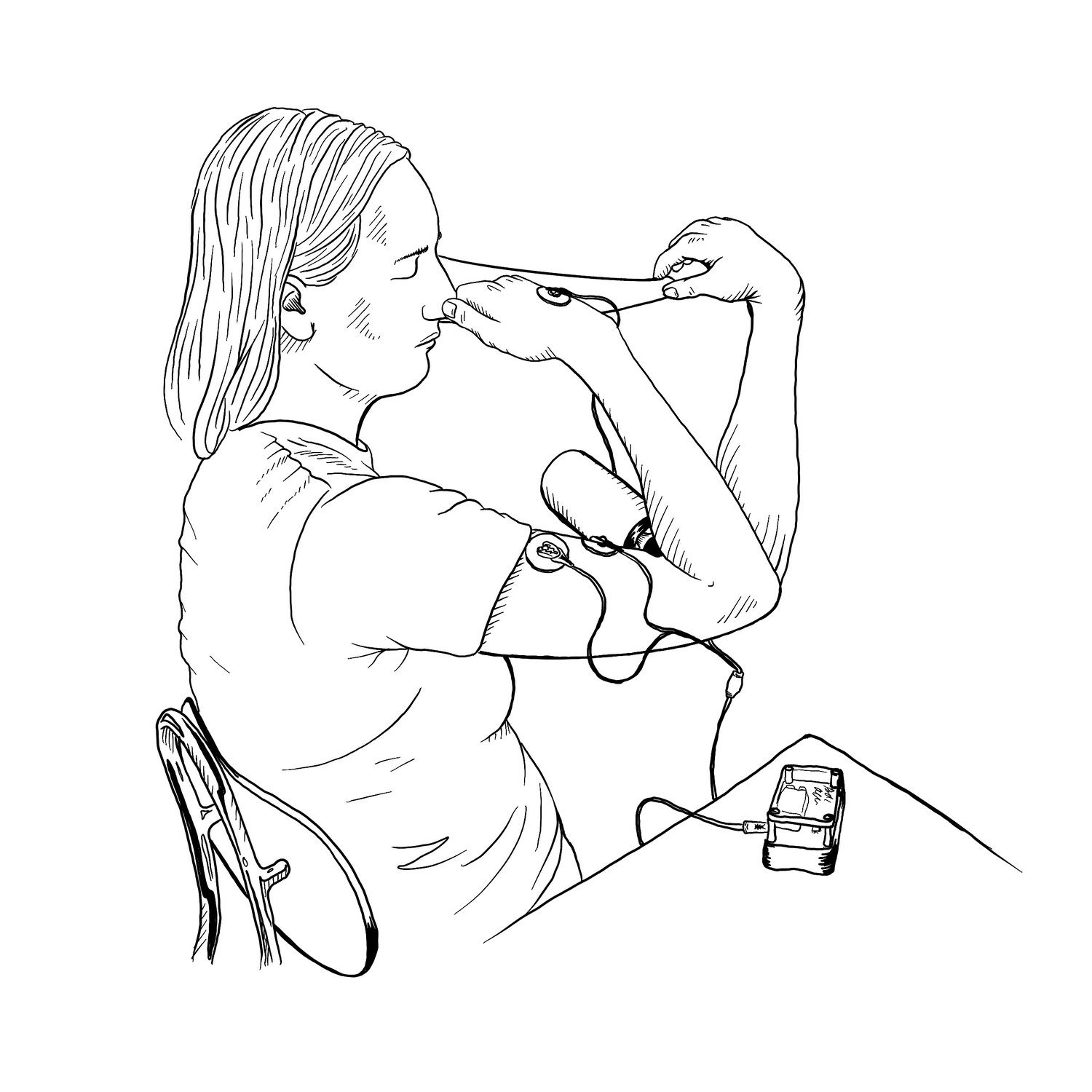
— Written by Milica Manojlovic —
We are all familiar with the Pinocchio story, right? A wooden boy whose nose would grow every time he lied. What if I told you that, with the right equipment, you could feel like Pinocchio in a just few minutes?
All you need is a massager (>50 Hz frequency and >1mm amplitude), either a blindfold or willpower to keep your eyes closed, and someone to help you conduct the whole thing (aka the experimentator).
- Firstly, you will have to contract your arm muscle so that the experimentator can find your biceps tendon.
- Close your eyes (or put on the blinfold) and position your arms, as shown in the illustration above.
- It’s time for the experimentator to turn on the massager and position it on the biceps tendon of your contracted arm!
- After aproximatelly one minute of the stimulation you should start feeling as if your arm is extending forward and taking the nose with it so that it feels like it’s getting longer. The more you stimulate, the more vivid the illusion becomes!
And that’s it – in just a few minutes, you can understand how Pinocchio felt like while lying. Unlike with Pinocchio, however, this illusion can occur without you having to lie to anyone’s face!

The Pinocchio effect is a well known body ownership illusion first demonstrated by James Lackner in 1988. So why does it happen?
Basically, the brain has to resolve a contradiction dealing with the location of your outstretched hand that is touching what feels like your nose. In essence, your brain is trying to understand how come your hand is out there tapping a nose, but you feel your nose being tapped too without any visual stimuli to tell you differently. Your brain does not like contradictions – it likes solutions. And the solution it comes up with is, that your nose is really that long!
The aspect of the illusion that we are interested in the most is the fact that the image of the body – the body schema – is constantly being updated in real time. So the Pinocchio illusion perfectly demonstrates how, at first glance, tiny changes in proprioception dramatically and quickly modify our body schema.
Given that this illusion is quite subjective and that there is no objective way to quantify the sensations present during the illusion, our goal with this project is to develop tools to fully understand what’s happening not only on a behavioral but also neural level while experiencing the Pinocchio illusion.
About Me
I am a master’s student of psychology at the University of Belgrade, Faculty of Philosophy and a junior researcher at the Institute for Medical Research at the Group for Neuroscience. My main research interest revolves around the memory formation process and the way we can use non-invasive brain stimulation techniques for memory enhancement. I find science popularization immensely important, especially among high-school students, so I am also affiliated with the Petnica Science Center where I assist high-schoolers in conducting ther first scientific experiments. I have a really sweet tooth, so in my free time I enjoy baking and creating my own pastry recipies.